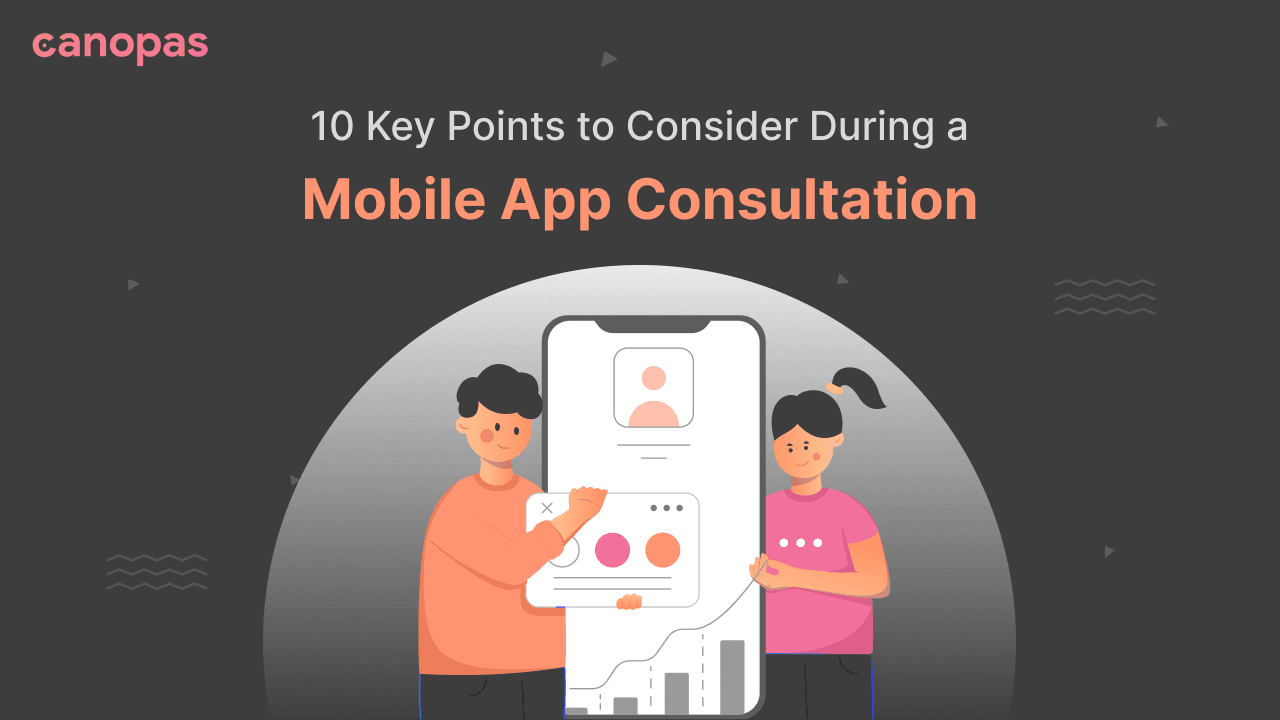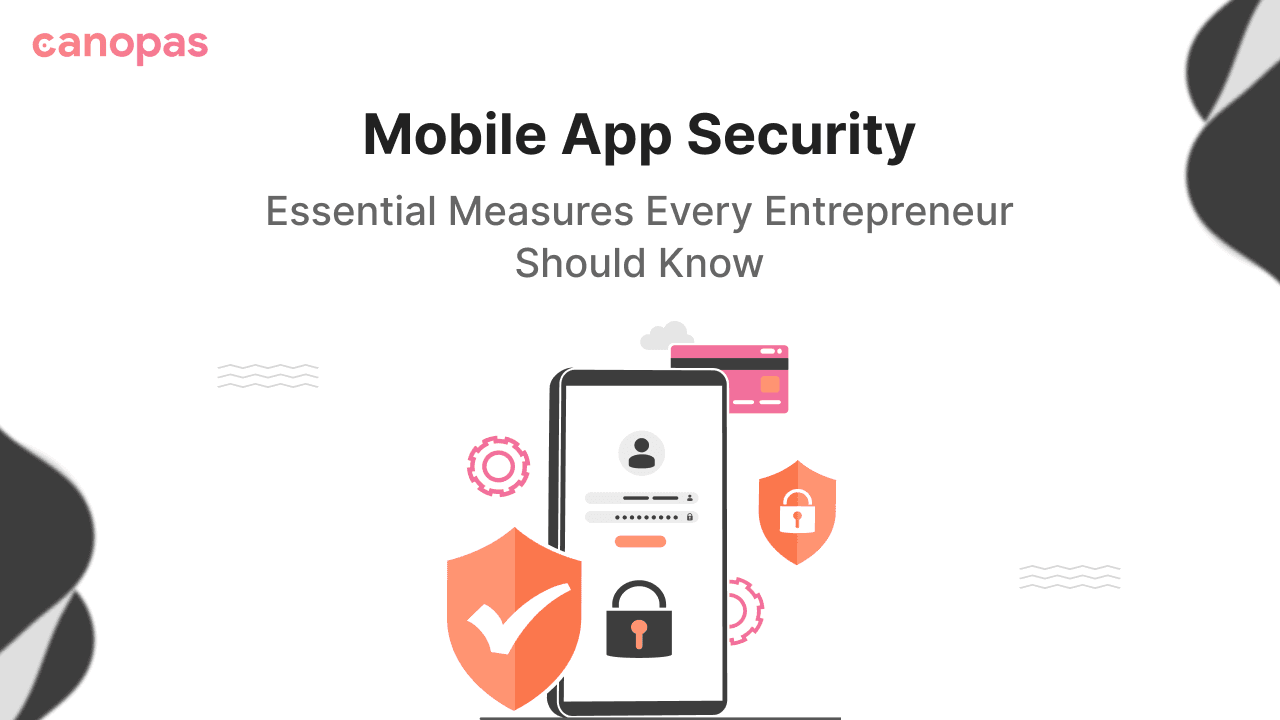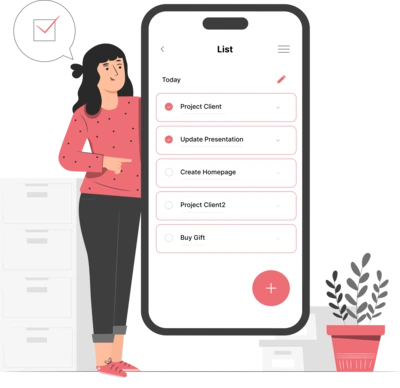
10 Key Points to Consider During a Mobile App Consultation
Do's and Don'ts for Mobile App Consultation
You've got an idea. It's brilliant, it's unique, and you're buzzing with excitement because you know it has the potential to make waves in the app world.
But before you dive headfirst into development, there's a crucial step to consider – the mobile app consultation. It's that cozy chat where your idea starts getting its shape, its form, its life.
Now, if you're thinking, "Oh, it's just a chat, what's the big deal?", think again.
A successful app development process is much like building a house. You wouldn't start laying bricks without a blueprint, right?
Similarly, your mobile app consultation is where you lay out your blueprint. It's where dreams meet reality, and plans are set into motion.
In this guide, we'll walk you through the 10 key points you absolutely cannot overlook during this pivotal phase.
Whether you're a seasoned app entrepreneur or a newbie just dipping your toes in, these insights are going to be your compass, guiding you toward a smoother, more successful app journey.
Let's get started!
Define Your Business Goals
Imagine setting off on a cross-country road trip without a map or destination in mind. Sounds a tad chaotic, doesn't it?
The same holds true for mobile app development. Without clear, defined business goals, you’re essentially wandering in the vast app universe, hoping to stumble upon success.
Why are business goals crucial?
Here are a few reasons you need business goals.
- Direction and Purpose: Setting specific goals gives your app a clear direction. It's not just about creating an app; it's about knowing why you're creating it. Are you aiming to increase sales, boost brand awareness, or perhaps offer a unique solution to a pressing problem? Your 'why' becomes the foundation of all subsequent decisions.
- Measurable Outcomes: Once you have clear goals, you can set tangible metrics to track your app's success. For instance, if your goal is to enhance customer engagement, your key metric might be the daily active user count.
- Resource Allocation: Knowing your goals helps you determine where to invest time, money, and other resources. You won’t be caught off guard, by pouring funds into features or marketing strategies that don’t align with your objectives.
- Team Alignment: A shared vision ensures everyone involved - from designers to developers to marketers - is on the same page. When everyone's rowing in the same direction, you reach your destination faster and more efficiently.
Begin by asking yourself some foundational questions.
What do you want your app to achieve in the next six months? A year? Maybe even five years down the line?
Think about the challenges your target audience faces and how your app proposes to solve them.
Sketch out a rough roadmap. It doesn't have to be perfect, but it should be a beacon, illuminating your path forward.
Determine Target Audience
Ever tried serving a gourmet steak to a vegetarian?
No matter how perfectly cooked, it's just not what they're looking for. The same principle applies to your app.
No matter how innovative or well-designed, if it doesn’t resonate with the right audience, it won’t achieve the desired impact.
Four Reasons Why Pinpointing Your Audience Matters?
- Tailored User Experience (UX): Once you know who you’re developing for, you can craft an experience that speaks to their preferences, needs, and behaviors. An app for teenagers will look and feel vastly different from one designed for retirees.
- Effective Marketing: Targeting everyone is essentially targeting no one. By narrowing down your audience, your marketing campaigns become more focused, relevant, and consequently, more successful.
- Feedback & Iteration: Engaging with a defined audience helps gather specific feedback. This constructive criticism is gold, enabling you to refine and optimize your app for better performance.
- Resource Optimization: With a clear audience in mind, you prevent wasting resources on features or strategies that don’t cater to your core users.
5 Steps to Help You Define Your Audience.
- Demographics: Start with the basics. Age, gender, location, occupation, and education level can give you a clear picture of who you're catering to.
- Psychographics: Dive deeper. What are their hobbies? Values? Pain points? Aspirations?
- Behavioral Patterns: How do they interact with technology? Are they early adopters or tech novices? What apps do they currently love and why?
- Surveys & Feedback: Consider conducting surveys or focus groups. Direct interaction can reveal insights you might have overlooked.
- Analyze Competitors: Look at similar apps or services. Who are they targeting? What gaps in the market can you fill?
Remember, the better you know your audience, the more aligned your app will be with their needs. It's all about creating that perfect match between what you offer and what they're seeking.
Platform Selection — iOS, Android, or Both?
Stepping into the world of app development feels a bit like walking into an ice cream shop with dozens of flavors.
Among the most crucial choices you'll make is picking the right platform. Should you go with the refined tastes of iOS, and the diverse flavors of Android, or try a mix of both?
Here are a few factors you can consider.
- Audience Demographics: iOS is popular in regions like North America and Western Europe, while Android dominates in Asia, Africa, and South America. Where does the majority of your target audience reside?
- Monetization Strategy: Generally, iOS users tend to spend more on in-app purchases, while Android has a broader user base that can generate ad revenue.
- Development Timeline: Android apps, due to device fragmentation, can sometimes take longer to develop and test. iOS, with its limited device range, might be quicker to launch.
- App Features: Some advanced features might be easier to implement on one platform over the other, or they may be exclusive to just one.
- Budget Constraints: Android apps might require testing on multiple devices, which can increase development costs. On the other hand, the Apple App Store has a more stringent approval process which might lead to additional iteration and tweaking.
In a world craving the best of both worlds, cross-platform development tools like Flutter, React Native, and Xamarin have emerged. These allow you to write code once and deploy it on both iOS and Android.
They're cost-effective and save time, but might not offer the level of optimization native solutions provide.
Your decision isn’t merely iOS vs. Android; it’s about aligning your choice with your business goals, audience preferences, and available resources.
Consult with your development team, conduct market research, and make an informed choice that maximizes your app’s potential.
Prioritize Features and Functionalities
Ah, the thrill of brainstorming! When you're envisioning your app, it's tempting to envision it as the Swiss Army knife of mobile apps – brimming with every feature imaginable.
But remember, even the most multifunctional tool has its limits. Instead of trying to cram in everything, the key is to prioritize.
Here are 4 reasons why prioritization matters.
- Focused User Experience (UX): An app cluttered with features can overwhelm users. A clean, focused app ensures a more enjoyable and intuitive user journey.
- Budget Management: Every added feature requires design, development, and testing. Prioritizing helps allocate the budget to what truly matters.
- Quick Time-to-Market: Reducing the initial feature set can accelerate your development timeline, allowing you to launch faster and start gathering user feedback.
- Flexibility for Future Iterations: Leaving room for future updates and features means your app can evolve with user needs and market demands.
5 Strategies you can use for prioritization.
- MVP (Minimum Viable Product): Start with the essential features that define your app's core purpose. Once the MVP is live and gains traction, you can then roll out additional features based on user feedback.
- User Stories & Personas: Create fictional but detailed profiles of your users. What do they want to achieve with your app? This exercise can highlight the most valuable features.
- Competitive Analysis: Investigate similar apps. What features do they offer? Where's the gap in the market you can fill?
- Feedback from Stakeholders: Collaborate with your team, potential users, and other stakeholders. Collective insights can often spotlight priorities.
- Feature Buckets: Categorize features into 'Must-have', 'Nice-to-have', and 'Can-wait'. This visual approach can make decision-making more straightforward.
While it's natural to want your app to be a jack-of-all-trades, remember the power of focus.
Prioritizing features not only streamlines development but ensures your app offers genuine value without overwhelming its users.
Think of it as crafting a fine dining menu – it’s not about quantity, but the quality and presentation of each dish.
Design Principles and User Experience (UX)
Ever judged a book by its cover?
Admit it, we all have. The truth is, appearances matter, especially in the digital realm.
Your app might boast cutting-edge functionalities, but if it's wrapped up in a confusing design, users will drop off faster than you can say "bad UX."
A few ways how stellar design and UX can help you differentiate from your competitors.
- First Impressions: Users form an opinion about an app within seconds. A sleek, intuitive design can be the difference between love at first sight and instant uninstallation.
- User Retention: A pleasant user experience keeps users coming back. Frustration, on the other hand, sends them running to competitors.
- Conversion Rates: Good design isn't just aesthetic; it’s functional. A well-designed app can guide users towards desired actions, be it signing up, making a purchase, or sharing with friends.
- Brand Image: Consistent, thoughtful design bolsters brand reputation. It conveys professionalism and commitment to quality.
You can start with these 5 Essential design and UX principles.
- Simplicity is King: Keep interfaces clean and uncluttered. Prioritize essential elements and minimize cognitive load for users.
- Consistency: Whether it's button styles, fonts, or color schemes, maintaining consistency reduces user confusion and reinforces brand identity.
- Feedback & Response: Ensure the app provides feedback, whether it’s a button animation, a success message, or an error notification. It keeps users informed and engaged.
- Intuitive Navigation: Organize information and actions logically. Users shouldn’t need a map to navigate your app.
- Optimize for Different Screens: With myriad devices out there, ensure your app looks and functions seamlessly, whether on a compact phone or a large tablet.
Design and UX are the silent ambassadors of your brand. They're the unspoken language that communicates value, quality, and trust to your users.
In the sprawling landscape of apps, standing out isn't just about what your app does; it's about how it makes users feel.
So, invest time and thought into the design – it's the silent symphony that plays in the background, making every app interaction harmonious and delightful.
Security and Data Protection
Picture this: you're entrusting someone with your most cherished secrets, and they leave them scattered in a public park. Unthinkable, right?
When users trust your app with their data, they're giving you their digital secrets. Ensuring their safety isn’t just ethical; it's absolutely essential in today's cyber landscape.
How a strong security implementation can help you gain an edge over your competitors.
- Trust Building: Users need assurance that their data, whether personal details or payment information, is in safe hands. A secure app fosters trust and credibility.
- Regulatory Compliance: Many regions have strict data protection regulations (like GDPR in Europe). Non-compliance can lead to hefty fines and legal actions.
- Prevent Financial Loss: Data breaches can have dire financial implications, both in terms of penalties and lost business due to a damaged reputation.
- Safeguard Intellectual Property: Your app may contain proprietary algorithms, designs, or content. Protecting it from breaches ensures your hard work remains exclusive.
A few security measures you can start with.
- Data Encryption: Ensure all user data, both at rest and in transit, is encrypted. It’s like converting information into a secret language only your app understands.
- Regular Updates & Patches: Cyber threats evolve constantly. Regularly update your app to fix vulnerabilities and stay one step ahead of hackers.
- Multi-Factor Authentication (MFA): Provide an additional layer of security by requiring users to verify their identity using two or more verification methods.
- Secure APIs: If your app communicates with servers or other services, ensure the APIs (Application Programming Interfaces) used are secure and regularly audited.
- Privacy by Design: Instead of bolting on security features, integrate them into the app’s design from the outset. It’s the difference between having a locked door and living within a fortified castle.
In the digital era, data is gold. But with great treasure comes great responsibility. As app developers and custodians of user trust, it's imperative to prioritize security at every stage of development.
After all, a fortress isn't built in a day, but its walls ensure the safety of all that lies within for years to come.
Budget and Timeline Constraints
The world of app development is not unlike an artist’s studio. As you stand poised, brush (or coding tool) in hand, before the vast canvas of possibilities, it's crucial to remember: not all masterpieces require infinite resources or endless hours.
With a clear understanding of budget and timeline constraints, you can paint a digital picture that's both captivating and economically savvy.
Here are a few reasons why budget and timeline matters.
- Scope Clarity: Clearly defined budgets and timelines prevent project scope creep, ensuring you stay on track without unnecessary deviations.
- Resource Optimization: Knowing your constraints helps allocate resources—both time and money—more efficiently, maximizing the return on investment.
- Stakeholder Expectations: Setting and managing realistic expectations with stakeholders, be it investors, team members, or users, fosters trust and reduces friction.
- Market Timing: In the ever-evolving app ecosystem, timing is key. Adhering to deadlines can ensure your app hits the market when it's most relevant.
Here are a few tips to navigate budget and timeline constraints.
- Phased Development: Instead of launching a feature-packed app, consider releasing a Minimum Viable Product (MVP) first. It allows for quicker launches, feedback gathering, and iterative improvement.
- Prioritize: Not all features are equally vital. Focus on what's truly essential for your app's core functionality and user value.
- Transparent Communication: Keep an open dialogue with your team and stakeholders. Regularly update them on progress, challenges, and any potential changes in scope.
- Utilize Pre-Built Solutions: Instead of building everything from scratch, explore platforms and tools that offer pre-built modules or solutions. This can save both time and money.
- Regularly Review & Adjust: As the project progresses, consistently review the budget and timeline. Adjustments might be necessary, but they should be data-driven and well-communicated.
Embarking on an app development journey with budget and time constraints might seem daunting, but consider them as the borders of your canvas.
Within these borders, creativity, innovation, and efficiency can flourish.
By embracing constraints, you're not limiting possibilities but rather channeling your resources to create a focused, impactful masterpiece in the vast gallery of apps.
Integration with Other Tools and Platforms
In the grand orchestra of the digital realm, apps are akin to individual instruments. While each can produce melodious tunes on its own, it's when they harmonize with others that a symphony is born.
Integrating your app with various tools and platforms not only broadens its capabilities but also ensures a seamless user experience.
While this is an optional step, here are a few reasons why they are crucial.
- Enhanced Functionality: Integrate to incorporate features that might be cumbersome to develop from scratch.
- User Convenience: Users often prefer apps that play well with the tools they already use, minimizing the need to jump between platforms.
- Data Flow and Analytics: Integrations can allow for streamlined data flow between platforms, providing rich insights and analytics.
- Competitive Advantage: Offering integrations can set your app apart in the market, adding a unique selling proposition.
Some of the most commonly used integrations are mentioned below.
- Payment Gateways: Ensure users have a hassle-free payment experience by integrating with reliable payment platforms like Stripe, PayPal, or Square.
- Social Media: Facilitate social sharing, sign-ins, or content fetching by integrating with platforms like Facebook, Twitter, or Instagram.
- Cloud Services: Allow users to save, fetch, or share data by integrating with cloud platforms such as Google Drive, Dropbox, or AWS.
- CRM & Marketing Tools: If your app caters to businesses, consider integrating with popular CRM or marketing automation tools like Salesforce or HubSpot.
- Analytics Platforms: Gain deeper insights into user behavior by integrating with analytics platforms like Google Analytics or Mixpanel.
A guideline for navigating the integration process for your app.
- Prioritize Based on User Needs: Before diving into integration, gather feedback to understand which tools or platforms your users most frequently use or desire.
- Opt for Reliable APIs: When integrating, ensure the third-party platforms have stable and well-documented APIs to minimize potential hiccups.
- Stay Updated: Third-party platforms may update their functionalities or terms of service. Regularly check for changes to ensure your integrations remain functional.
- Ensure Security: With integrations come potential vulnerabilities. Ensure data exchanged between platforms is encrypted and secure.
Integration isn't just about adding functionalities; it's about weaving your app into the larger digital tapestry that users interact with daily.
By making your app a versatile player in this interconnected ecosystem, you not only enhance its value but also ensure that it becomes an indispensable part of the user's digital symphony.
Maintenance and Support
Ever visited a botanical garden? It’s not the mere planting of seeds or saplings that makes it flourish.
It's the consistent watering, trimming, and care that ensures each plant reaches its full potential.
Similarly, creating an app is just the beginning; the real challenge lies in its ongoing maintenance and support to ensure its seamless performance and user satisfaction.
Here are a few reasons why maintenance and support are essential to your app.
- Ensuring Seamless Performance: Regular check-ups can spot and fix bugs or glitches, ensuring users have a smooth experience.
- Adapting to Changes: With software updates, changing user demands, and evolving technology landscapes, apps need regular tweaks to stay relevant and functional.
- User Trust and Loyalty: Quick and efficient support builds user trust, demonstrating that their concerns and issues are valued and addressed.
- Staying Competitive: With a plethora of apps vying for user attention, regular updates and prompt support can set your app apart.
5 important components of effective maintenance and support.
- Bug Fixes: Addressing glitches or malfunctions that might hamper user experience or app functionality.
- Performance Optimization: Tweaking the app to enhance speed, reduce lag, and improve overall user experience.
- Feature Updates: Rolling out new features or improving existing ones based on user feedback and changing demands.
- Security Updates: Regularly patching any vulnerabilities and ensuring user data protection.
- Platform Compatibility: Ensuring the app performs seamlessly across different devices, OS versions, and screen sizes.
Here are 4 ways you can ensure top-notch support for your app.
- User-Friendly Support Channels: Whether it's a chatbot, email support, or a helpline, ensure users can easily reach out with their concerns.
- Prompt Response Times: The quicker an issue is addressed, the more valued a user feels.
- Knowledge Bases and FAQs: Maintain an updated repository of common issues and resolutions. This empowers users to troubleshoot minor problems on their own.
- Regular Feedback Loop: Encourage users to report issues, suggest improvements, and share their experiences.
Building an app might resemble planting a garden, but its real growth and beauty emerge from the ongoing care and attention it receives.
By prioritizing maintenance and providing robust support, you're not just keeping your app alive; you're allowing it to thrive and blossom in the crowded digital landscape.
Marketing and App Store Optimization (ASO)
Imagine you've just penned a riveting novel. But if it's lost among countless others in a vast library without any signage, will readers find it?
Similarly, in the digital domain, developing a top-tier app isn't enough.
You must usher it into the spotlight to ensure users discover it among the vast sea of apps. This is where marketing and App Store Optimization (ASO) come into play.
You might be wondering why you should bother about marketing and ASO. Here are a few ways you can consider.
- Visibility: With millions of apps vying for attention, a strategic approach ensures your app doesn't get lost in the crowd.
- User Acquisition: Increasing the visibility of your app leads to more downloads and a broader user base.
- Higher Revenue: More visibility and downloads can translate into increased in-app purchases, advertisements, and overall revenue.
- Brand Building: Effective marketing cultivates brand recognition and loyalty.
5 Key Components of App Store Optimization are mentioned below.
- Keyword Research: Identify the terms users are likely to use when searching for apps similar to yours and incorporate them in your app's title and description.
- Compelling App Description: Create a concise yet comprehensive description highlighting the app's core features and benefits.
- High-Quality Screenshots and Videos: Visual previews give potential users a glimpse of the app's interface and functionality.
- User Reviews and Ratings: Encourage satisfied users to leave positive reviews and ratings, as these greatly influence download decisions.
- Regular Updates: Frequently updated apps are perceived as well-maintained, affecting user trust and app store rankings.
A few strategies you can use for effective app marketing.
- Targeted Advertising: Utilize platforms like Facebook and Google Ads to reach potential users based on demographics, interests, and more.
- Engaging Content: Regularly produce blogs, videos, or podcasts that resonate with your target audience, driving traffic and interest toward your app.
- Social Media Presence: Engage with users on platforms like Twitter, Instagram, and LinkedIn. Share updates, gather feedback, and foster a community.
- Influencer Collaborations: Partner with influencers who align with your app's niche to reach a broader audience.
- Promotions and Discounts: Offer time-limited promotions or discounts to incentivize downloads.
In the vast digital bookstore that is the app market, marketing and ASO are your neon signs, guiding users to your masterpiece.
They're not just about gaining visibility but crafting a narrative around your app, making it irresistible for users to explore.
Got Questions? — Book a Free Consultation
Navigating the realm of mobile app development is akin to embarking on a vast sea voyage.
Each key point we've delved into serves as a compass, guiding you to ensure your ship doesn't just set sail, but thrives amidst the waves.
From understanding the user's needs and market analysis to integrations, maintenance, and marketing, each facet is integral to not only launching but also sustaining a successful app.
As with any voyage, preparation is paramount. By being thorough and thoughtful during the consultation phase, you chart a course that leads to richer, more fruitful shores.
Are you ready to transform your vision into a groundbreaking app? Let's embark on this journey together. With expertise, guidance, and a splash of innovation, we'll turn your dream into the next big app sensation.
Schedule a Consultation with Us Now!
Still have questions or need clarity on your app journey? Reach out, and our crew of seasoned app sailors is here to assist. Dive deep into the ocean of possibilities with us! Contact Us Today!









Whether you need...
- *High-performing mobile apps
- *Bulletproof cloud solutions
- *Custom solutions for your business.